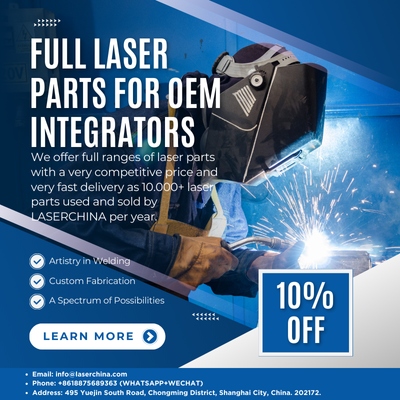Laser welding is a high-precision welding technique that uses a focused laser beam to melt and fuse materials, typically metals, at the joint. This modern welding technology offers several advantages over traditional welding methods, such as arc welding or gas tungsten arc welding (GTAW). These advantages include precision, speed, minimal heat distortion, and the ability to weld dissimilar materials. Laser welding is increasingly being used in various industries, including automotive, aerospace, electronics, and medical device manufacturing.
1. Precision and Accuracy
One of the primary advantages of laser welding is the precision it offers. The laser can be focused into a very small, concentrated beam, which allows for fine, detailed welds with minimal heat affected zone (HAZ). This makes it possible to weld components that require high levels of accuracy, such as small, thin parts or delicate assemblies that cannot withstand the heat from traditional welding methods. The high accuracy of laser welding is particularly beneficial in industries like electronics, where parts are tiny and intricate.
In traditional welding methods, controlling the heat input is more challenging, leading to a greater likelihood of distortion or the need for post-welding treatments. Laser welding, on the other hand, provides better control over heat distribution, ensuring a clean and precise weld.
2. Speed and Efficiency
Laser welding is faster than many traditional welding techniques. Because the laser can produce a highly concentrated and intense energy beam, the welding process can be completed in a fraction of the time compared to conventional welding. This increased speed translates to higher productivity and reduced downtime, which can be particularly valuable in industries like automotive manufacturing where efficiency is critical.
In addition, the ability to automate the laser welding process makes it ideal for mass production environments. Robots and CNC machines can be used to carry out precise laser welding with minimal human intervention, further increasing productivity and consistency.
3. Minimal Heat Affected Zone (HAZ)
Traditional welding methods often result in a larger heat affected zone (HAZ), which is the area around the weld that experiences a change in its properties due to the heat. This can lead to material warping, stress, or weakening, especially with sensitive or thin materials.
In contrast, laser welding has a much smaller HAZ due to the focused nature of the laser beam. This minimizes the risk of damaging the surrounding material and reduces the need for additional post-welding processing, such as heat treatment or straightening. The reduced HAZ also ensures better integrity of the welded joint and maintains the mechanical properties of the base material, which is crucial in industries like aerospace, where material strength is paramount.
4. Ability to Weld Dissimilar Materials
Laser welding is highly effective at welding different types of materials, even those that are difficult to join using traditional methods. For example, laser welding can successfully join materials like aluminum to steel, or copper to stainless steel, which are often problematic for conventional welding processes due to differences in melting points or thermal conductivity.
This ability to join dissimilar materials makes laser welding highly versatile, opening up a wide range of applications across various industries, including automotive, electronics, and even medical devices, where the combination of materials is often necessary to achieve desired properties such as corrosion resistance, strength, or conductivity.
5. Minimal Need for Post-Welding Processing
Because laser welding produces high-quality, clean welds with minimal distortion or impurities, the need for post-welding processing is significantly reduced. Traditional welding often requires grinding, polishing, or other finishing steps to correct imperfections or improve the appearance of the weld. With laser welding, the weld is usually smooth and requires little to no additional treatment, leading to time and cost savings.
6. Applications in Various Industries
Laser welding is used in many high-tech and precision-driven industries:
-
Automotive: Laser welding is essential in the automotive industry for joining complex parts, such as body panels, exhaust systems, and battery components. It enables the mass production of lightweight, strong, and precise components necessary for modern vehicles.
-
Aerospace: In the aerospace sector, laser welding is used to join critical components such as turbine blades, engine parts, and structural elements. The precision and minimal heat input of laser welding are critical to maintaining the integrity of the high-performance materials used in aerospace manufacturing.
-
Electronics: Laser welding plays a vital role in the electronics industry, where small and delicate components, such as connectors and sensors, need to be welded with high precision and minimal heat damage.
-
Medical Devices: Laser welding is used extensively in the production of medical devices, particularly those made from thin, precise materials like titanium and stainless steel. Its ability to create clean, strong welds with minimal thermal impact is critical in ensuring the safety and performance of medical implants and instruments.
Conclusion
Laser welding offers several compelling advantages over traditional welding methods, particularly in terms of precision, speed, and minimal heat distortion. Its versatility in welding dissimilar materials and its ability to deliver high-quality, consistent results make it indispensable in industries such as automotive, aerospace, electronics, and medical device manufacturing. While the initial investment in laser welding equipment can be high, the long-term benefits of increased productivity, reduced post-processing, and superior weld quality often outweigh the costs, making it a valuable investment for modern manufacturing operations.
